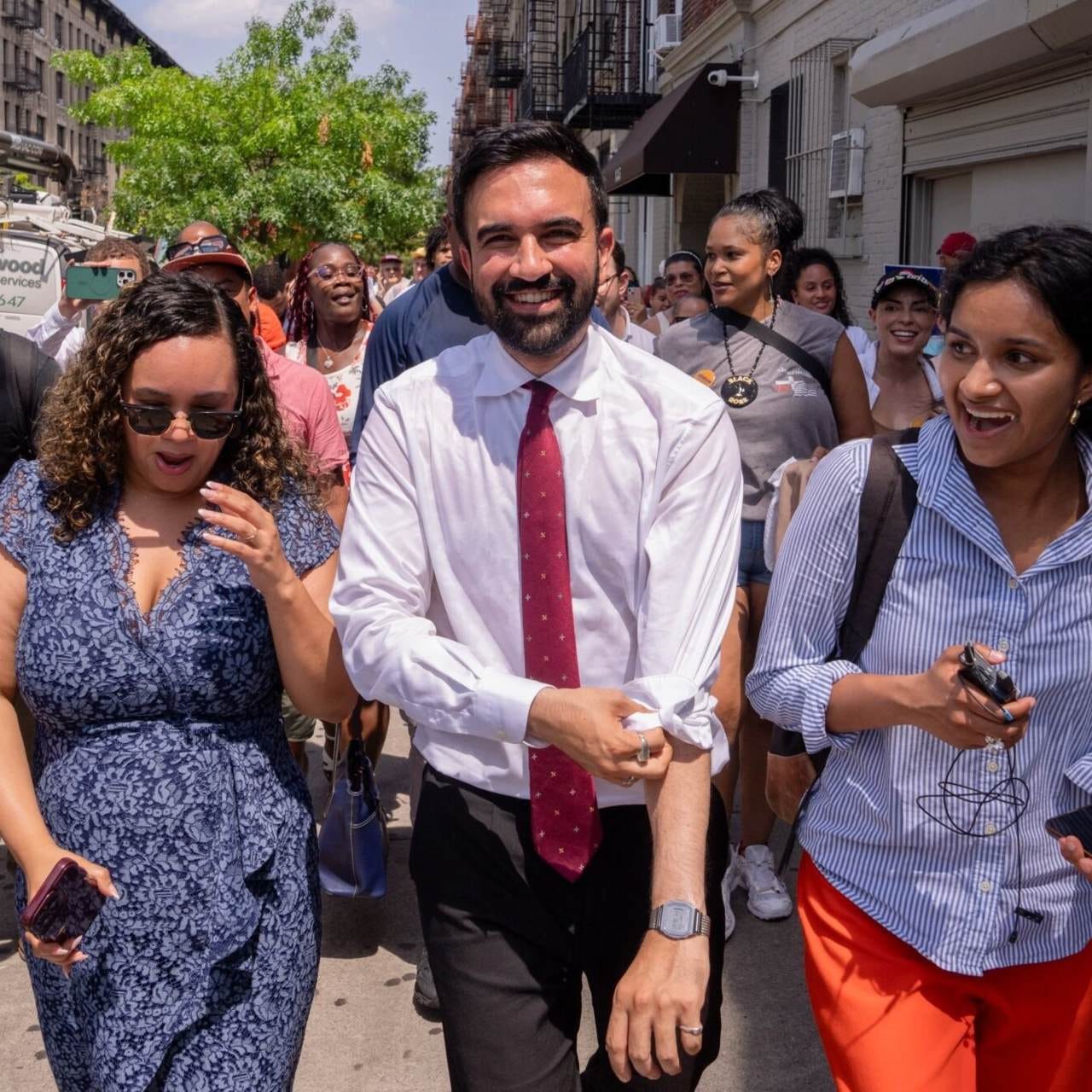Understanding Current Politics with Game Theory
As voters drift from the center, traditional left-right models break down. Game theory offers a new lens: the political spectrum may be circular—and strategy must evolve to meet a reshaped electorate.
By Barry Kahn
After Zohran Mamdani’s surprise victory in the NYC mayoral primary, many Democrats are raising concerns again about how left-leaning candidates might affect the party’s performance in the general election, both in the 2026 midterms and the 2028 presidential race.
For decades, American politics has been viewed through the lens of a race to the center. Basic game theory suggests that if political ideology can be plotted on a one-dimensional spectrum, the optimal strategy for each party is to position itself as close as possible to the median voter. Once one party stakes out a position, the other maximizes its vote share by moving just to the other side—capturing the remainder of the electorate further in that direction. But if either candidate moves toward the extremes, they risk splitting centrist voters to the opposing side.
This is Game Theory 101. This same logic explains why McDonald’s and Burger King are often located across the street from each other, or why two gas stations in a small town sit side by side in the middle of town. And it’s why Democrats and Republicans have historically converged on a narrow band at the center of the political spectrum. In that environment, the few issues that present a binary choice—such as abortion or same-sex marriage— play an outsized role in partisan identity; they allow voters to draw a clear distinction between the parties.
The American primary system complicates this strategic calculus. In primaries, the electorate is narrowed to a party’s base. The optimal positioning shifts: candidates no longer aim for the center of the full political spectrum, but for the center of their party’s ideological subset. The positioning necessary for primary success inherently hinders general election viability. To mitigate that risk, party leaders have historically implemented mechanisms such as superdelegates to help guide centrist candidates through the nominating process.
This logic was evident in the Democratic Party’s 2016 preference for Hillary Clinton over Bernie Sanders, despite polling that suggested Sanders would likely fare better in a general election. For many within the party, the polling data was hard to trust—it seemed to contradict decades of established wisdom regarding electability.
Yet 2016 may have revealed a structural flaw in that framework: the political spectrum is not strictly linear. In practice, the presence of multiple ideological axes might reshape the political spectrum as a circle.
On a circular spectrum (see diagram), ideological adjacency becomes more complex. Mamdani, for instance, focused on the rising cost of groceries, an issue that also featured prominently in Donald Trump’s 2024 presidential campaign messaging. Their solutions—and their understandings of the problem’s root causes—were very different, but issue recognition was shared.
Take trade policy as another example. Sanders shares Trump’s skepticism of unregulated free trade; he campaigned against NAFTA and other trade agreements. Although Sanders’ and Trump’s rhetoric differ sharply, it is not difficult to imagine a Sanders administration also adopting tariffs—framed through a progressive lens rather than a nationalist one.
Similarly, centrists from both parties—such as Hillary Clinton and Mitch McConnell—have supported free trade, even if their underlying motivations and ideological justifications differ. What often arises from deep ideological contrasts can, in practice, lead to convergence on policy.
Perhaps even more critical to voters than policy details is a candidate’s view of the system itself. In addition to overlaps on trade, the cost of living, and other specific issues, both right-wing populists and democratic socialists argue that the system is fundamentally broken. The moderate wings of both parties tend to defend the system’s core structure. This helps explain why voters may cross traditional ideological lines: not because they see shared values, but because they hear a shared recognition of a problem. Differences in the message or the messenger may matter less than agreement on the diagnosis.
From a game-theoretic perspective, positioning relative to one’s opponent now offers two potential strategies: move adjacent or move directly across the circle —where what appears opposite on one axis may, in fact, be adjacent on another. The better strategy depends on the distribution of voters around that circle.
In recent cycles, Democratic leadership has often sought to position itself directly opposite the populist right. But that framing has seen the party lose the White House and both houses of Congress. The rise of figures like Mamdani—and the sustained popularity of Bernie Sanders—may signal that a growing portion of the electorate, spanning party lines, is clustering around shared populist and anti-establishment themes.
If that’s the case, then political strategists may need to rethink long-standing assumptions about voter alignment and ideological proximity. A framework built for the old linear world will not serve well for an electorate that now divides along multiple axes. Regardless of party, the strategic path forward may require less focus on the ideological midpoint and more on understanding the lumpy topology of the electorate.
Barry Kahn is best known as the founder and former CEO of Qcue, which pioneered dynamic pricing in live entertainment. After Qcue’s acquisition by Endeavor, he led ticketing and software development for its hospitality division, building the first global hospitality ticketing platform for an Olympic Games. He is now principal at Kanmoa Expert Strategy, providing strategic advice and litigation support on event ticketing, technology, pricing, and media and entertainment, and CEO of Duæl, a media and events company reimagining track & field. Dr. Kahn holds a PhD and MA in Economics from the University of Texas at Austin and a BS in Applied & Engineering Physics from Cornell University.




